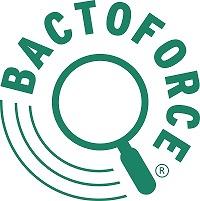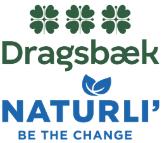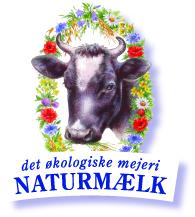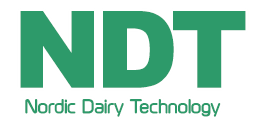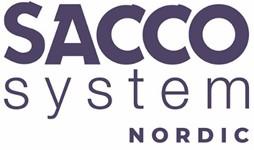
Mange mejerier producerer forskellige varianter af gul ost til et marked, som er præget af hård konkurrence og hvor forbrugertrenden er, at de unge vælger den traditionelle skæreost fra og i stigende omfang foretrækker specialoste, hårde gule ost m.v. Seminaret vil indledningsvis beskæftige sig med den markedsmæssige situation for segmentet ’gule oste’ og derudover byder dagen på et bredt spektrum af indlæg, som har produktionsorienteret fokus på produktion, teknologi og ny viden/research på området. Der vil være indlæg indenfor syrning og modning, aromadannelse samt krystaldannelse i den gule os.
Tilmeld dig allerede i dag her
Seminar Sponsor: Lyras

Yellow cheese today
Paulo Cernuschi will offer technical insights and consumer trends for 2025, with a particular focus on the demand for cheeses and consumption patterns of yellow cheeses.
In his presentation, he will delve into the definitions and characteristics of yellow cheeses, providing an overview of what sets them apart. He will also present the latest market data related to the production of this cheese category in Europe, covering PDO cheeses, Dutch-style cheeses, and big-eye cheeses.
The production and export dynamics of these cheeses and their increasing application in both the HoReCa and industrial sectors will be explored.
As part of this product sector, the dynamics concerning the industrial use of vegetable fats in cheese production will be addressed, a topic of growing interest, especially economically and in some cases strategically for several producers.
Finally, the emerging trend of plant-based cheeses will be discussed, highlighting the expanding consumer base and its impact on the traditional cheese market. The presentation will provide an overview of the yellow cheese sector, from a technical, consumer and industry perspective.

Smagsdifferentiering og krystaldannelse ved brug af modningskulturer
Under ostemodningen foregår der en kompleks række at biokemiske reaktioner hvor ostens bestanddele som mælkesukker, proteiner, aminosyrer og fedt omdannes til en række andre komponenter, som ender med at være alt afgørende for ostens unikke og endelige smagsprofil. Ønskes det at guide ostens smag i en bestemt retning eller reducere modningstiden er valget af modningskultur afgørende. Samtidig vil anvendelse af forskellige modningskulturer give producenter mulighed for at skabe stærke premium brands med smags differentiering i fokus. I langtidsmodnede oste opfattes krystaller ofte som et kvalitetstegn, men i andre ostetyper ses de som en kvalitetsforringelse. Der er en række tekniske parametre som er afgørende for krystaldannelse og her kan både calcium, mælkesyre, proteinnedbrydning og vandindhold spille en rolle. Differentiering kan også opnås ved at tilbyde oste med lavere saltindhold. Reduktion af salt i ost er dog tekniskudfordrende i forhold til at opretholde den gode smag og tekstur. Her er det afgørende både at justere ostningsprocessen så det samme vandindhold opnås, men valget af osteløbe, startekultur og modningskultur er også afgørende fordi proteinnedbrydningen skal balanceres for at opnå den ønskede smag.

BGB – Beskyttet Geografisk Betegnelse, Status som unikke EU-fødevarer – fokus på oste
I Danmark har vi 4 oste, der har opnået BGB-status, det er Esrom, Danablu, Danbo og Havarti.
Gennem Fødevarestyrelsen ansøges EU-kommissionen om ret til at opnå BGB-status på baggrund af en varespecifikation, der beskriver produktets særlige karakteristika og fremstillingsmetode samt en beskrivelse af sammenhængen mellem produktet, dets karakteristika og det geografiske område.
Ved flere årlige bedømmelser sikres det, at kvaliteten lever op til varespecifikationerne og produkterne må bære Navnet og BGB-mærket. Endvidere, kan mejerierne dyste mod hinanden i faglig kappestrid og bruge bedømmelsesforummet som ERFA-gruppe.

Calf chymosine further explored
Calf chymosine has been extracted for many centuries from calf stomachs and applied in cheese making.
In the midst of the previous century calf chymosine was the first enzyme produced by bio-fermentation and enabled the global growth of the cheese-industry.
Calf chymosine is well known for its ability to hydrolyze kappa-casein at the 105-106 position, causing coagulation of milk as first stage of cheese making.
Less known, but equally important is the ability of calf chymosine to hydrolyze alpha s1 casein at the 23-24 position resulting in a large peptide known as alpha s1-I and a smaller 1-23 peptide.
This specific hydrolysis of alpha s1 casein is important for flavor and texture development in all types of cheeses.
Improved water-binding, emulsification properties and release of flavor precursors are all linked to the formation of alphas1-I and the 1-23 peptide fraction.
By means of selection of natural calf-chymosine variants it has been possible to commercialize a bio-fermentation produced calf chymosine with improved specific alpha s1 casein hydrolysis properties, whilst maintaining the specific kappa casein hydrolysis, thus combining fast coagulation with excellent cheese flavor and texture development.

Smear-ripened cheeses: Practices, flora & Technological levers
Through this lecture we will make a journey into smearing. From what is “smearing", what is “smear" used for, and factors influencing its establishment and development. We will review the main micro-organisms that could be found in the complex surface ecosystems of smear-ripened cheeses such as ripening, spoiling, pathogen flora & the Technological levers to drive and control them. These levers will be illustrated by various practice examples from cheesemaking impact, salt, pH, humidity, cheese ripening and washing management, selection and use of ripening and bioprotective flora. We will focus on specific cases of mold, Pseudomonas and Listeria control in this particularly sensitive kind of cheeses that are smear-ripened cheeses.

Optimering af koagel udlægning giver bedre vægtnøjagtighed og mere ensartet vandindhold i gul ost
Fremstilling af gul ost ved hjælp af forpresning er en velkendt teknologi. Gennem årene har det anvendte udstyr dog udviklet sig betydeligt. Først ved flytning af forpresningen, herunder koagel udlægning, til et separat, skræddersyet forpresse kar, dernæst udviklingen af den automatisk koagel udlægning i forpresse karet. Hermed forsvandt de fleste manuelle operationer og alt tungt arbejde.
Senest har denne udvikling sørget for en betydelig højere vægtnøjagtighed og mere ensartet vandindhold i de enkelte osteblokke.
I dag tilbydes forpresse karret til fremstilling af både brød, blok og cylindriske oste med høj vægtnøjagtighed og ensartet vandindhold, i tæt konkurrence med førende kontinuerlige forpresnings og doseringssystemer til osteblokke.
Samtidig med at de klassiske fordele ved batch forpresning bibeholdes, såsom:
- Ægte batch-id
- Fleksibel størrelse og udskæring af de forpressede osteblokke tilpasset af kunden
- Våd udlægning af oste massen; Gouda-Edam-Swiss typer
- Tør udlægning af oste massen; Tilsit-Havarti typer
- Ost med krydderi tilsætning
- Fuld fleksibilitet af ovennævnte fra batch til batch
Forpresse løsningen læner sig dermed op ad rigtig kontinuerlig drift ved at bruge 3, helt op til 4 forpresse kar i en enkelt produktionslinje. Med kapaciteter der også vil være interessante for større osteproducenter.
Udviklingen og automatiseringen af selve koagel udlægningen har været afgørende for disse resultater.

PINHOLES IN CHEESE – WHAT IT IS AND HOW TO LIMIT ITS PRESENCE
Pinholes in continental cheese have for decades presented a challenge to cheese producers – questions such as: What are pinholes in continental cheeses and what issues can pinholes cause? How and why are pinholes formed? What are its relationships and what are the key root causes?
Cheese expert Harrie Spijkerman has in cooperation with NIZO investigated these issues and Harrie will present examples of actions to limit pinhole formation.

Den 128. beretning – 2024?
128. beretning fra Statens Mejeriforsøg fra 1961 er en ikonisk rapport, der beretter om oteteknikkens indflydelse på en lang række faktorer som f.eks. udbytte og kvalitet. Beretningen har været benyttet af langt de fleste ostemejerier, når deres ostningsproces har skulle udvikles eller tilpasses, ligesom resultaterne er blevet brugt til at forklare nogle af de effekter man - udbytte – og kvalitetsmæssigt – har set i mejeriernes osteproduktion. Men i 2024, 63 år efter udgivelsen af beretningen er det relevant at se på om de faktorer og parametre der er beskrevet stadig holder vand. I indlægget vil der blive fokuseret på nogle af de processer der er ”nye” i forhold til beretningen og hvordan de evt. kan påvirke de resultater der kom ud af 128. beretning.




